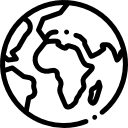$3450
$2760
The Europe and South and Central America Insect Pest Control Market size is projected to reach US$ 6.68 billion by 2031 from US$ 4.62 billion in 2024. The market is expected to register a CAGR of 5.5% during 2025–2031.
Europe and South and Central America Insect Pest Control Market Analysis
The Europe and South and Central America insect pest control market is expanding rapidly, driven by growing public health concerns and increased awareness of health risks associated with vector-borne diseases. The European Public Health Association, European Public Health Alliance, and other governing bodies have intensified efforts to mitigate the spread of Lyme disease, West Nile virus disease, Zika virus infection, and dengue, among other infections caused by insects, which have led to an increasing trajectory of cases across states and provinces in Europe and South and Central America countries. A transformative trend in the market is the integration of artificial intelligence (AI) and the Internet of Things (IoT) into integrated pest management (IPM) systems. Initiatives like FACT-AI, funded by the USDA's National Institute of Food and Agriculture, aim to provide growers with open-source pest identification and decision-support tools tailored for small-grain systems.
Europe and South and Central America Insect Pest Control Market Overview
The Europe and South and Central America insect pest control market is experiencing significant growth, driven by climate change and urbanization, which have led to increased pest infestations and a rising demand for sustainable pest control solutions. Enhanced awareness of IPM practices and stricter regulations on chemical pesticide use are also contributing to this trend. Advancements in precision pest control technologies, such as AI-driven monitoring systems and drone-based pesticide applications, also benefit the Europe and South and Central America insect pest market.
Customize Research To Suit Your Requirement
We can optimize and tailor the analysis and scope which is unmet through our standard offerings. This flexibility will help you gain the exact information needed for your business planning and decision making.
Europe and South and Central America Insect Pest Control Market: Strategic Insights


Shejal
Have a question?
Shejal will walk you through a 15-minute call to present the report’s content and answer all queries if you have any.
 Speak to Analyst
Europe and South and Central America Insect Pest Control Market Drivers and Opportunities
Speak to Analyst
Europe and South and Central America Insect Pest Control Market Drivers and Opportunities
Customize Research To Suit Your Requirement
We can optimize and tailor the analysis and scope which is unmet through our standard offerings. This flexibility will help you gain the exact information needed for your business planning and decision making.
Europe and South and Central America Insect Pest Control Market: Strategic Insights


Shejal
Have a question?
Shejal will walk you through a 15-minute call to present the report’s content and answer all queries if you have any.
 Speak to Analyst
Speak to Analyst
Market Drivers:
Urbanization and Population Density:
By 2050, over 83.7% of Europe's population is expected to reside in urban areas, significantly increasing the demand for pest control services in densely populated regions, particularly in Western Europe.Health Risks with Pests
The rising prevalence of vector-borne diseases such as Lyme disease and West Nile virus is heightening public awareness of the health hazards posed by pest infestations, driving demand for pest control solutions.Regulatory Pressure on Biocides
The EU's Biocidal Products Regulation (BPR) enforces rigorous safety assessments, prompting companies to develop safer, low-toxicity alternatives and adopt integrated pest management (IPM) approaches.Technological Advancements in Pest Control
The integration of smart technologies, such as IoT-enabled traps and AI-driven analytics, is enhancing the efficiency and effectiveness of pest management systems.Growing Awareness of Pest-Related Health Risks
An increasing awareness of health risks associated with pests is driving demand for pest control solutions, particularly in urban areas.Increasing Adoption of Biopesticides
The shift toward environmentally sustainable pest management is driving the uptake of biopesticides. These solutions offer effective pest control while minimizing harm to non-target organisms and ecosystems.
Market Opportunities:
Rising Demand for Biopesticides and Eco-Friendly Solutions
Growing consumer and regulatory pressure for sustainable, low-toxicity pest control products in both regions drives biopesticide adoption.
Integration of Smart Technologies (IoT, AI, Automation)
The deployment of IoT-enabled monitoring systems, AI-driven analytics, and automated pest control devices is enhancing operational efficiency while reducing reliance on chemical treatments.
Expansion in Urban and Agricultural Pest Management
Rapid urbanization in Europe and the expansion of agribusinesses in South America are driving demand for comprehensive pest control services across residential, commercial, and agricultural sectors.
Innovation in Genetically Resistant Crops and Control Methods
Breakthroughs in genome sequencing—such as research on leafhoppers in South America—are enabling the development of pest-resistant crop varieties, thereby minimizing the need for chemical interventions.
Advancements in Vector Control for Public Health
Rising incidence of vector-borne diseases (dengue, Zika, Lyme) drives investment in innovative mosquito and pest control strategies, including biological and genetic approaches.
Supportive Government Policies and Regulations
EU Green Deal and stringent South American public health initiatives encourage the development and adoption of integrated pest management and safer pest control alternatives.
Europe and South and Central America Insect Pest Control Report Segmentation Analysis
To offer a comprehensive understanding of market dynamics, growth opportunities, and emerging trends, the Europe and South and Central America insect pest control market is typically segmented as follows:
By Insect Type:
Termites
Pest control for termites involves using chemical barriers and baiting systems to prevent wood damage by these wood-destroying insects.
Cockroaches
Cockroach control typically employs insecticides, baits, and sanitation measures to eliminate these disease-carrying pests from residential and commercial spaces.
Bedbugs
Bedbug management relies on heat treatments, insecticides, and vacuuming to eradicate these blood-feeding pests that infest sleeping areas.
Mosquitoes
Mosquito control uses larvicides, adulticides, biological agents, and genetic techniques to reduce populations and limit disease transmission.
Ants
Ant control includes baiting, insecticide sprays, and habitat modification to disrupt colonies and prevent infestations in homes and agriculture.
Flies
Fly control involves traps, insecticides, sanitation, and biological agents to manage fly populations in urban, agricultural, and food-processing environments.
Others
This segment covers control methods for a variety of pests like beetles, moths, and weevils, using chemical, biological, and mechanical approaches tailored to specific insect behaviors.
By Form:
Dry Form
Dry insecticides, such as powders, dusts, and granules, are made by mixing active ingredients with inert carriers and are used for targeted application in cracks, soil, or crops to provide long-lasting pest control.
Liquid Form
Liquid insecticides are formulated by dissolving active chemicals in solvents or water-based carriers and are applied via sprays or foggers for quick, broad-area pest elimination and residual protection.
By Control Method:
Chemical Control
Chemical control uses synthetic or natural insecticides to kill or repel pests through contact, ingestion, or inhalation, providing quick and effective pest management.
Physical Control
Physical control involves mechanical methods like traps, barriers, heat treatments, or manual removal to prevent or reduce pest infestations without chemicals.
Biological Control
Biological control employs natural predators, parasites, or pathogens to suppress pest populations sustainably by disrupting their life cycles or behavior.
By Category:
Synthetic
Synthetic insecticides are chemically manufactured compounds designed to kill or repel pests quickly and effectively, often providing long-lasting residual effects.
Herbal/Natural
Herbal or natural insecticides are derived from plant extracts or naturally occurring substances and are used as eco-friendly alternatives with lower toxicity to humans and the environment.
By Applications:
Residential/Household
Pest control products for residential use are designed to protect homes from common pests like ants, cockroaches, and termites, using safe and easy-to-apply formulations such as sprays and baits.
Commercial Facilities
In commercial settings like offices, hotels, and restaurants, pest control involves regular monitoring and treatment to maintain hygiene and comply with health regulations.
Animal Husbandry
Pest control in animal husbandry focuses on managing parasites and insects that affect livestock health and productivity, using insecticides and repellents that are safe for animals.
Industrial
Industrial pest control targets pests in manufacturing and storage facilities to prevent contamination and damage, often using integrated pest management systems and automated treatments.
Crop Protection
Crop protection employs insecticides, biopesticides, and other methods to safeguard crops from insect damage, ensuring higher yields and quality in agriculture.
By Geography:
Europe
South America
The insect pest control market in South America is expected to witness the fastest growth. Increasing use of innovative biological control methods and genetically resistant crops to combat agricultural pests and vector-borne diseases.
Europe and South and Central America Insect Pest Control Market Report ScopeEurope and South and Central America Insect Pest Control Market Share Analysis by Geography
South America is expected to grow the fastest in the next few years. Emerging markets in Europe also have many untapped opportunities for insect pest control providers to expand.
The insect pest control market grows differently in each region owing to urbanization and population growth, agricultural expansion, health awareness, regulatory support, and technological advancements. Below is a summary of market share and trends by region:
1. Europe
Market Share:
Growing market with steady progressKey Drivers:
- Invasive Species Threats
- Public Health Concerns
- Climate Change Impact
Trends:
Rise in eco-friendly biopesticides and smart pest control
2. South America
Market Share:
Substantial share due to health awarenessKey Drivers:
- Agricultural Productivity Concerns
- Adoption of Biopesticides
Trends:
Growth in biological controls and pest-resistant crops
Europe and South and Central America Insect Pest Control Market Players Density: Understanding Its Impact on Business Dynamics
High Market Density and Competition
Competition is strong due to the presence of established players such as Bayer AG, BASF SE, Rentokil Initial Plc, Anticimex, and Syngenta AG. Regional and niche providers such as Koppert Biological Systems, Jesmond BioScience GesmbH, and Henkel are also adding to the competitive landscape across different regions.
This high level of competition urges companies to stand out by offering:
- Developing eco-friendly, effective, and smart pest control solutions
- Use of IoT, AI, and data analytics in pest management services
- Commitment to green and sustainable pest control methods
Opportunities and Strategic Moves
- Increasing urban populations drive demand for residential and commercial pest control services.
- Companies could increase investment in research for novel biopesticides, genetic pest control, and digital technologies.
- Promote eco-friendly and health-conscious products to align with evolving consumer preferences.
Major Companies operating in the Europe and South and Central America Insect Pest Control Market are:
- BASF SE
- SC Johnson and Son Inc
- Jesmond BioScience GesmbH
- Sumitomo Chemical Co Ltd
- 3M Co
- Rentokil Initial Plc
- Thermacell
- Henkel AG & Co KGaA
- Reckitt Benckiser Group Plc
- Rollins Inc
Disclaimer: The companies listed above are not ranked in any particular order.
Other companies analysed:
- Elis France
- SC Johnson Professional USA Inc
- SBM Life Science
- Dalton Engineering
- LODI UK LIMITED
- HiCare Services Pvt Ltd
- Dhanuka Agritech Ltd
- Arbuda Agrochemicals Limited
- Sumitomo Chemical India Ltd
- Katyayani
- PECOPP
- Zyax Chem
- Native Indian Organics
- GODREJ LTD
- B&G Equipment Co
- DynaTrap
Europe and South and Central America Insect Pest Control Market News and Recent Developments
BASF has launched a new insecticide called Efficon
BASF has introduced a new insecticide called "Efficon". Specifically designed to manage piercing and sucking pests that can significantly reduce crop yields. The insecticide utilizes BASF's new active ingredient, Axalion, and is formulated to offer long-lasting residual control against pests like aphids, jassids, and whiteflies. Efficon is part of BASF's efforts to develop solutions tailored for the local market.
Europe and South and Central America Insect Pest Control Market Report Coverage and Deliverables
The "Europe and South and Central America Insect Pest Control Market Size and Forecast (2021–2031)" report provides a detailed analysis of the market covering the following areas:
- Europe and South and Central America Insect Pest Control size and forecast at regional and country levels for all the key market segments covered under the scope
- Europe and South and Central America Insect Pest Control Market trends, as well as market dynamics such as drivers, restraints, and key opportunities
- Detailed Porter's Five Forces and SWOT analysis
- Europe and South and Central America Insect Pest Control Market analysis covering key market trends, regional framework, major players, regulations, and recent market developments
- Industry landscape and competition analysis covering market concentration, heat map analysis, prominent players, and recent developments for the Europe and South and Central America Insect Pest Control Market
- Detailed company profiles

Report Coverage
Revenue forecast, Company Analysis, Industry landscape, Growth factors, and Trends

Segment Covered
This text is related
to segments covered.

Regional Scope
North America, Europe, Asia Pacific, Middle East & Africa, South & Central America

Country Scope
This text is related
to country scope.
Frequently Asked Questions
Biological and eco-friendly solutions are likely to emerge as key trends in the market in the future.
Health risk awareness and public health concerns, rapid urbanization, and rising population density are major factors contributing to market growth.
The market is expected to register a CAGR of 5.5% during 2025–2031.
BASF SE, SC Johnson and Son Inc, Jesmond BioScience GesmbH, Sumitomo Chemical Co Ltd, 3M Co, Rentokil Initial Plc, Thermacell, Henkel AG & Co KGaA, Reckitt Benckiser Group Plc, Rollins Inc, are among the key players operating in the Europe and South and Central America insect pest control market.
The List of Companies- Europe and South and Central America Insect Pest Control Market
- BASF SE
- SC Johnson and Son Inc
- Jesmond BioScience GesmbH
- Sumitomo Chemical Co Ltd
- 3M Co
- Rentokil Initial Plc
- Thermacell
- Henkel AG & Co KGaA
- Reckitt Benckiser Group Plc
- Rollins Inc
The Insight Partners performs research in 4 major stages: Data Collection & Secondary Research, Primary Research, Data Analysis and Data Triangulation & Final Review.
- Data Collection and Secondary Research:
As a market research and consulting firm operating from a decade, we have published many reports and advised several clients across the globe. First step for any study will start with an assessment of currently available data and insights from existing reports. Further, historical and current market information is collected from Investor Presentations, Annual Reports, SEC Filings, etc., and other information related to company’s performance and market positioning are gathered from Paid Databases (Factiva, Hoovers, and Reuters) and various other publications available in public domain.
Several associations trade associates, technical forums, institutes, societies and organizations are accessed to gain technical as well as market related insights through their publications such as research papers, blogs and press releases related to the studies are referred to get cues about the market. Further, white papers, journals, magazines, and other news articles published in the last 3 years are scrutinized and analyzed to understand the current market trends.
- Primary Research:
The primarily interview analysis comprise of data obtained from industry participants interview and answers to survey questions gathered by in-house primary team.
For primary research, interviews are conducted with industry experts/CEOs/Marketing Managers/Sales Managers/VPs/Subject Matter Experts from both demand and supply side to get a 360-degree view of the market. The primary team conducts several interviews based on the complexity of the markets to understand the various market trends and dynamics which makes research more credible and precise.
A typical research interview fulfils the following functions:
- Provides first-hand information on the market size, market trends, growth trends, competitive landscape, and outlook
- Validates and strengthens in-house secondary research findings
- Develops the analysis team’s expertise and market understanding
Primary research involves email interactions and telephone interviews for each market, category, segment, and sub-segment across geographies. The participants who typically take part in such a process include, but are not limited to:
- Industry participants: VPs, business development managers, market intelligence managers and national sales managers
- Outside experts: Valuation experts, research analysts and key opinion leaders specializing in the electronics and semiconductor industry.
Below is the breakup of our primary respondents by company, designation, and region:

Once we receive the confirmation from primary research sources or primary respondents, we finalize the base year market estimation and forecast the data as per the macroeconomic and microeconomic factors assessed during data collection.
- Data Analysis:
Once data is validated through both secondary as well as primary respondents, we finalize the market estimations by hypothesis formulation and factor analysis at regional and country level.
- 3.1 Macro-Economic Factor Analysis:
We analyse macroeconomic indicators such the gross domestic product (GDP), increase in the demand for goods and services across industries, technological advancement, regional economic growth, governmental policies, the influence of COVID-19, PEST analysis, and other aspects. This analysis aids in setting benchmarks for various nations/regions and approximating market splits. Additionally, the general trend of the aforementioned components aid in determining the market's development possibilities.
- 3.2 Country Level Data:
Various factors that are especially aligned to the country are taken into account to determine the market size for a certain area and country, including the presence of vendors, such as headquarters and offices, the country's GDP, demand patterns, and industry growth. To comprehend the market dynamics for the nation, a number of growth variables, inhibitors, application areas, and current market trends are researched. The aforementioned elements aid in determining the country's overall market's growth potential.
- 3.3 Company Profile:
The “Table of Contents” is formulated by listing and analyzing more than 25 - 30 companies operating in the market ecosystem across geographies. However, we profile only 10 companies as a standard practice in our syndicate reports. These 10 companies comprise leading, emerging, and regional players. Nonetheless, our analysis is not restricted to the 10 listed companies, we also analyze other companies present in the market to develop a holistic view and understand the prevailing trends. The “Company Profiles” section in the report covers key facts, business description, products & services, financial information, SWOT analysis, and key developments. The financial information presented is extracted from the annual reports and official documents of the publicly listed companies. Upon collecting the information for the sections of respective companies, we verify them via various primary sources and then compile the data in respective company profiles. The company level information helps us in deriving the base number as well as in forecasting the market size.
- 3.4 Developing Base Number:
Aggregation of sales statistics (2020-2022) and macro-economic factor, and other secondary and primary research insights are utilized to arrive at base number and related market shares for 2022. The data gaps are identified in this step and relevant market data is analyzed, collected from paid primary interviews or databases. On finalizing the base year market size, forecasts are developed on the basis of macro-economic, industry and market growth factors and company level analysis.
- Data Triangulation and Final Review:
The market findings and base year market size calculations are validated from supply as well as demand side. Demand side validations are based on macro-economic factor analysis and benchmarks for respective regions and countries. In case of supply side validations, revenues of major companies are estimated (in case not available) based on industry benchmark, approximate number of employees, product portfolio, and primary interviews revenues are gathered. Further revenue from target product/service segment is assessed to avoid overshooting of market statistics. In case of heavy deviations between supply and demand side values, all thes steps are repeated to achieve synchronization.
We follow an iterative model, wherein we share our research findings with Subject Matter Experts (SME’s) and Key Opinion Leaders (KOLs) until consensus view of the market is not formulated – this model negates any drastic deviation in the opinions of experts. Only validated and universally acceptable research findings are quoted in our reports.
We have important check points that we use to validate our research findings – which we call – data triangulation, where we validate the information, we generate from secondary sources with primary interviews and then we re-validate with our internal data bases and Subject matter experts. This comprehensive model enables us to deliver high quality, reliable data in shortest possible time.
Trends and growth analysis reports related to Europe and South and Central America Insect Pest Control Market

Aug 2025
Amorphous Silica Market
Size and Forecast (2021 - 2031), Global and Regional Share, Trend, and Growth Opportunity Analysis Report Coverage: By Grade (High-Purity, Medium-Purity, and Low-Purity), Product Type (Precipitated Silica, Silica Gel, Colloidal Silica, Fumed Silica, and Others), Application (Rubber, Electrical and Electronics, Building and Construction, Personal Care and Cosmetics, Food and Beverages, Oil and Gas, Pulp and Paper, Agrochemicals, and Others), and GeographyÂ

Aug 2025
Leather for Automotive Seats Market
Size and Forecast (2021 - 2031), Global and Regional Share, Trend, and Growth Opportunity Analysis Report Coverage: By Type [Genuine Leather and Artificial Leather (Polyurethane, Polyvinyl Chloride, and Others)], Vehicle Type (Passenger Cars, Light Commercial Vehicles, Heavy Commercial Vehicles, and Others), and Geography Â

Aug 2025
Leather for Aviation Application Market
Size and Forecast (2021 - 2031), Global and Regional Share, Trend, and Growth Opportunity Analysis Report Coverage: By Type [Genuine Leather and Artificial Leather (Polyurethane, Polyvinyl Chloride, and Others)], Application [Seats, Headrests, Armrests, Cushions, Cabin Interiors, and Others], Aircraft Type [Private Aircraft, Commercial Aircraft, Military Aircraft, and Others], and Geography

Aug 2025
Leather for Railway Market
Size and Forecast (2021 - 2031), Global and Regional Share, Trend, and Growth Opportunity Analysis Report Coverage: By Type (Genuine Leather and Artificial Leather [Polyurethane, Polyvinyl Chloride, and Others]), Application (Train Seats, Traction Bellows, Handle and Grip Bars, Cushions and Pillows, and Others), Train Type (Passenger Trains, Freight Trains, Mining Trains, and Others), and Geography

Aug 2025
Insect Pest Control Market
Size and Forecast (2021 - 2031), Global and Regional Share, Trend, and Growth Opportunity Analysis Report Coverage: By Insect Type (Termites, Cockroaches, Bedbugs, Mosquitoes, Ants, Flies, and Others), Form (Dry and Liquid), Control Method (Chemical, Biological, and Physical), Category (Synthetic and Herbal/Natural), and End User (Residential/Household, Commercial Facilities, Animal Husbandry, Industrial, and Crop Protection)

Aug 2025
Re-Refined Paraffinic Base Oil Market
Size and Forecast (2021 - 2031), Global and Regional Share, Trend, and Growth Opportunity Analysis Report Coverage: By Process (Acid Treatment, Clay Treatment, Solvent Extraction, and Hydrotreating), Application (Engine Oil, Hydraulic Oil, Metalworking Fluid, Compressor Oil, Grease, Turbine Oil, and Others), End Use (Automotive, Construction, Mining and Metallurgy, Marine, Energy and Power, Oil and Gas, and Others), and Geography

Aug 2025
Cosmetic Polymer Ingredients Market
Size and Forecast (2021 - 2031), Global and Regional Share, Trend, and Growth Opportunity Analysis Report Coverage: By Type (Polyethylene Glycol, Acrylic Acid-Based, Vinyl Acetate, Silicone, Cellulose, Collagen, Pectin, Xanthan Gum, Chitosan, and Others), Category (Natural, Synthetic, and Semi-Synthetic), Function (Rheology Modifier, Stabilizers, Emulsifiers, Film Formers, Conditioning, and Others), Application (Skincare, Hair Care, Makeup, and Others), and Geography

Aug 2025
Plastic Pipes Market
Size and Forecast (2021 - 2031), Global and Regional Share, Trend, and Growth Opportunity Analysis Report Coverage: By Type [Corrugated (Single-Wall and Multi-Wall) and Smoothwall], Material Type (Polyvinyl Chloride, High-Density Polyethylene, Polypropylene, and Others), Application (Water Supply, Sewage and Drainage, Irrigation, Gas Distribution, and Others), End-Use Industry (Construction and Infrastructure, Water and Wastewater Management, Oil and Gas, and Others), and Geography